I’ve been champing at the bit to bring you this post ever since I decided to fly home to Perth a few weeks ago and join my family at our annual sauce making day. After taking 1000 shots, editing it down to 100, editing it down again to 30, and then undertaking the excruciating task of making the final selection, I’m delighted to bring you my family’s ultimate ‘how to’ for Italian tomato passata.
Tomato passata is the base for all Italian tomato sauces. It is uncooked tomato puree without seeds or skins which is seasoned liberally with salt, bottled and preserved to be used in sauce dishes throughout the year. Essentially, it is tomato sauce in its rawest form. It can not be eaten directly from the bottle as it requires cooking until the tomatoes’ raw acidity is neutralised and the sauce is thickened for eating.
Tomato Sauce Day is when Italians all around the world get together with their families to make, bottle and preserve tomato passata to stock up the cupboards and use for the year. The call of Tomato Sauce Day is felt loud and strong across each family as it stands for so much more than the end product of having passata to take home. It mostly stands for family, for a coming together of all the generations and for making something together that is shared between all.
Both my sister and I moved from Perth to Sydney over ten years ago, and during that time, we have never been back for sauce day. For many years, we have been relying on the generosity of our family to make the sauce for us and bring it to Sydney in 12 bottle cases whenever they came to visit. A thousand thank yous to my family for forgoing the option to check in luggage just so they could bring us sauce.
This year, we finally managed to coordinate our schedules, and Deanna and I headed to Perth to join my family in making an epic 364 x 750ml bottles of tomato passata. This will provide our four families (Mum and Dad, Adam’s Family, Deanna’s Family and Scotty and I) with enough sauce for the year. Don’t let the scale of our sauce day scare you – it can be done in very small batches too!
In preparation for sauce day, mum sent through a note on how the day was going to roll (It is important to note that every member of my family is crazy organised), so in the interests of giving you a rare glimpse into my family, I thought it would be fun to share the note with you, because it had Scotty and me in stitches:
Have I prepared you sufficiently for the epic tomato passata making process? Well, hang on to your hats because its going to be a fun and messy ride showcasing an authentic Italian sauce day!
——————————————————————–
While sauce making is often done in large numbers to last 12 months, it can be done on a much smaller scale. To determine exactly what you will need, you first need to decide how many bottles you want to make and then work backwards. Every 1kg tomatoes will make approximate. 1 x 750ml bottle of passata. For our sauce day, we made 364 bottles from 34 x 12kg cases.
PRODUCE
There are only three ingredients for our family passata – Tomatoes, Basil and Salt. Like with all Italian recipes, the key to a great passata is sourcing the very best produce available.
Tomatoes
It’s stating the obvious, but we have to start with the tomatoes of course as they are the hero of passata (and Italian cuisine more generally). For tomato passata, it is important that the tomatoes sourced are vine ripened. Whichever breed of tomato you go for, if they aren’t vine ripened, they won’t yield enough flavourful liquid for your passata. I’ll talk about this more in the process section, but the flavour of the tomato passata comes not just from the tomato juice, but mainly from the tomato skins. While you can make passata from many different varieties of tomatoes, our family always uses vine ripened roma tomatoes as we feel it yields the best results for us.
I mentioned earlier that the date of Tomato Sauce Day is dictated by the tomatoes themselves. This is because the tomatoes are sourced direct from the grower so their ripeness (and hence readiness for passata) depends on the climate and weather patterns in each year. In Australia, the tomatoes are usually ready around mid to late February (our Summer) but final confirmation of the sauce making day comes after a number of phone calls to the grower prior to the ripeness to see how the tomatoes are tracking and when they will be ready.
Basil
The basil we use in our passata is grown in my father’s garden as it is very fragrant. After Christmas my father stops trimming his large basil plants so that the leaves grow large. During the passata making process, a large basil leaf is placed in the bottom of each bottle before the passata is poured in so that it infuses the liquid as it is stored in cupboards during the year. If, like me, you can’t seem to get basil to grow, as long as you find fragrant basil leaves, you’ll be fine.
Salt
Salt is certainly not the hero, but plays a very important role. It is added to the passata just prior to pouring and sealing the bottles to both season the sauce but also to help preserve the passata which will last in the bottles for up to 3 years.
——————————————————————–
EQUIPMENT
- Large buckets – for washing and storing the tomatoes
- Small paring knives – for coring the tomatoes
- Large aluminium stock pot – for boiling the tomatoes
- Large triple ring gas burner – used with aluminium pot and metal drum
- Large full gas bottle (depending on the amount of tomatoes, you may need to refill it)
- Large stainless steel strainer
- Large piece cheesecloth (or a tea towel for small quantities)
- Electric tomato press (required for large batches, or a mouli for small quantities)
- 750ml beer bottles – with bottle cap top (1kg tomatoes makes approx. 1 x 750ml bottle of passata)
- Bottle caps and a capping machine
- Large metal drum – for boiling the bottles (or use large aluminium pot for small quantities)
——————————————————————–
PROCESS
From mum’s note in the introduction, you can see that she has listed an overview of the day’s proceedings. But, if you really are keen to try an Italian family sauce day for yourself, here’s all you need to know about how to do it!
To start, ensure your sauce bottles are clean and sterilised before beginning the process. We reuse our bottles each year and the weekend prior to sauce day, the bottles are properly washed and sterilised.
Fill large buckets halfway with water and add as many tomatoes to each bucket as possible. Using a paring knife, take each tomato out of the water, wipe the tomatoes then remove the centre core and any bad bits of the tomatoes you can see. Then set cleaned tomatoes aside in washed crates ready for the next step.
Fill the large aluminium pot half full with water and heat over the gas till boiling. In batches, blanch the tomatoes till softened, and the skins start to peel slightly. Scoop them out with the strainer and place them on the cheesecloth.
Twist the cheesecloth gently to drain off any excess water from the tomatoes (you want to ensure that you are only removing water and not tomato juice) and then transfer the tomatoes to a large bucket ready for the tomato press (or mouli).
At this stage, it is important to start working in batches. Place a large sterilised bucket under the spout of your tomato press where the juice will extract and another small bucket under spout where the skins will extract, and gently guide the blanched tomatoes through the press. After the first pass of a batch of tomatoes, take the skins and seeds and pass them back through the tomato press another 3 times. The skins are really what provides the flavour and the thickness to the sauce.
Each time the skins are passed through, it becomes harder for the machine to process them. You will need to press down on the skins to guide them, but ensure you listen to the sounds of your machine and ease off if it sounds under strain.
Season the passata to taste with salt, and stir in with a large spoon.
You are now ready for the bottling stage. Push a large basil leaf (or two smaller leaves) in the spout of each clean bottle and fill with the prepared passata using a funnel.
Ensure you leave a gap of a couple of centimetres at the top and then seal each bottle using a capping machine.
The final step in the process, and the step that ensures the sauce’s preservation, is to boil the bottles. To prepare the bottles for boiling, place your drum over the gas hob. Put a thick towel in the base of your drum, and start layering the bottles in, ensuring that you use old rags (or newspaper) between the bottles so that when they are boiling they don’t hit each other and shatter. Continue to build up the bottles in the drum until you are out of space, or out of bottles.
Fill the drum with cold water and slowly bring it to a boil over the gas. Boil for 30 minutes and then turn off the gas and allow the drum to cool overnight (the bottles and water will take a long time to cool enough for them to be removed from the drum without burning you).
Remove the bottles gently and then store in a cool, dry and dark place until you are ready to use.
Thus concludes the epic walk through of how to make passata. Even though we made ours in a large batch, it really is very easy to scale down into a much smaller batch and I encourage you to try it. My sister and I have been thinking about our desires to start a Sydney branch of the Michetti family event ever since that day, and now that our training is sufficiently ‘refreshed’, we have convinced Mum and Dad to come to Sydney next year to do it with us!
For four of my favourite recipes that feature our family’s homemade tomato passata, see the suggested posts below.



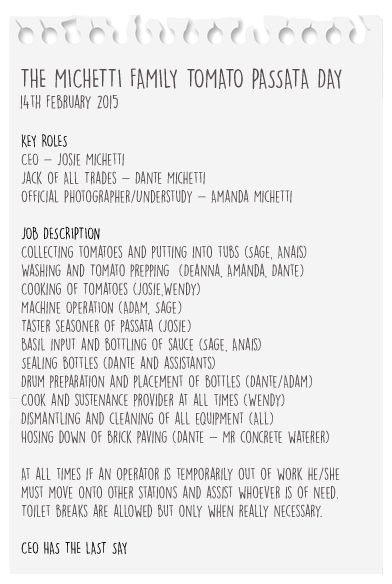
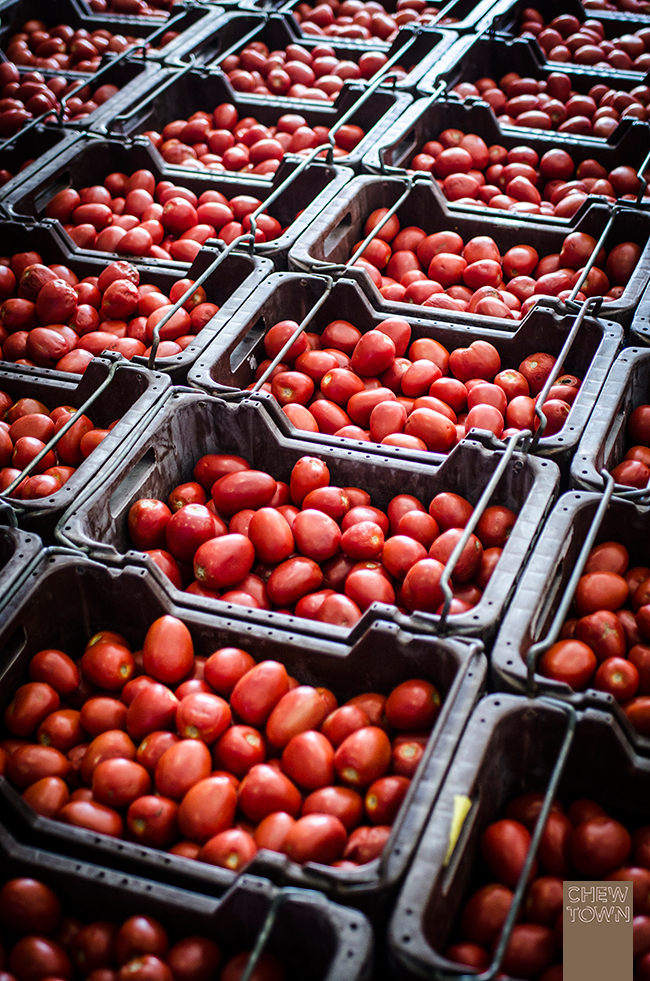
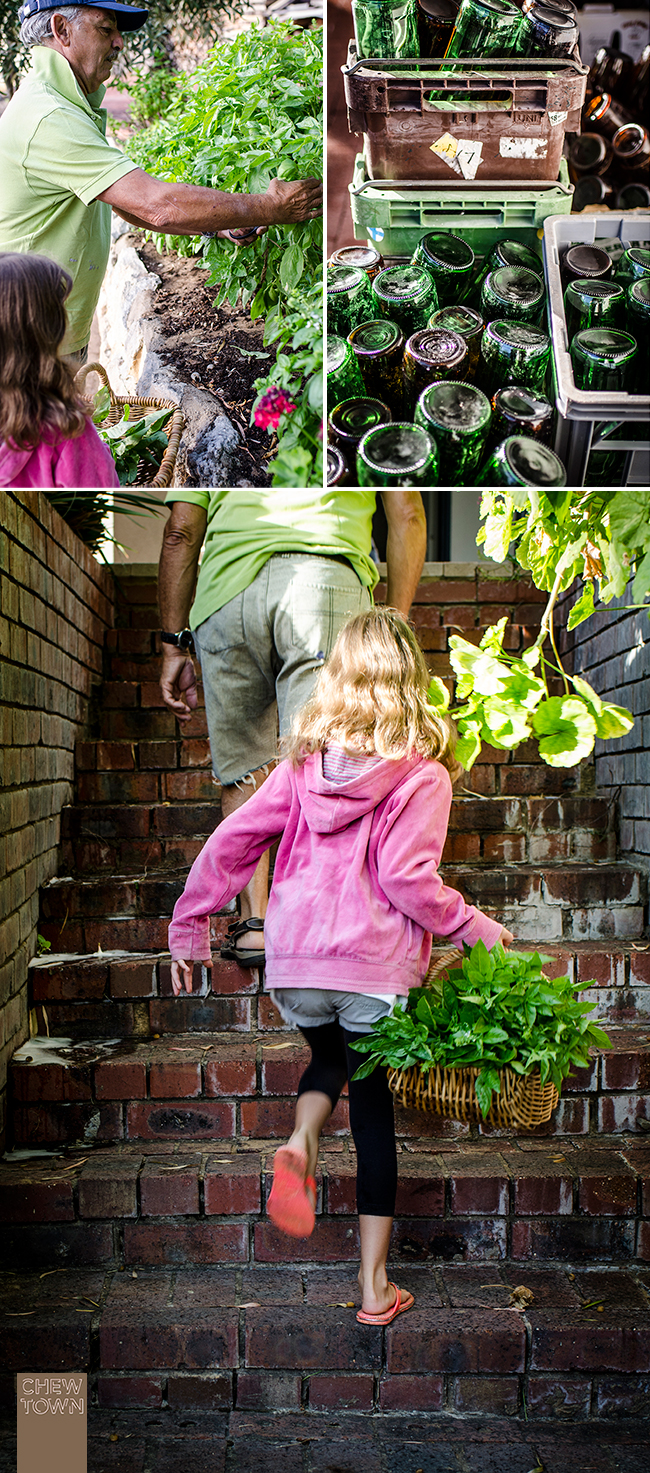
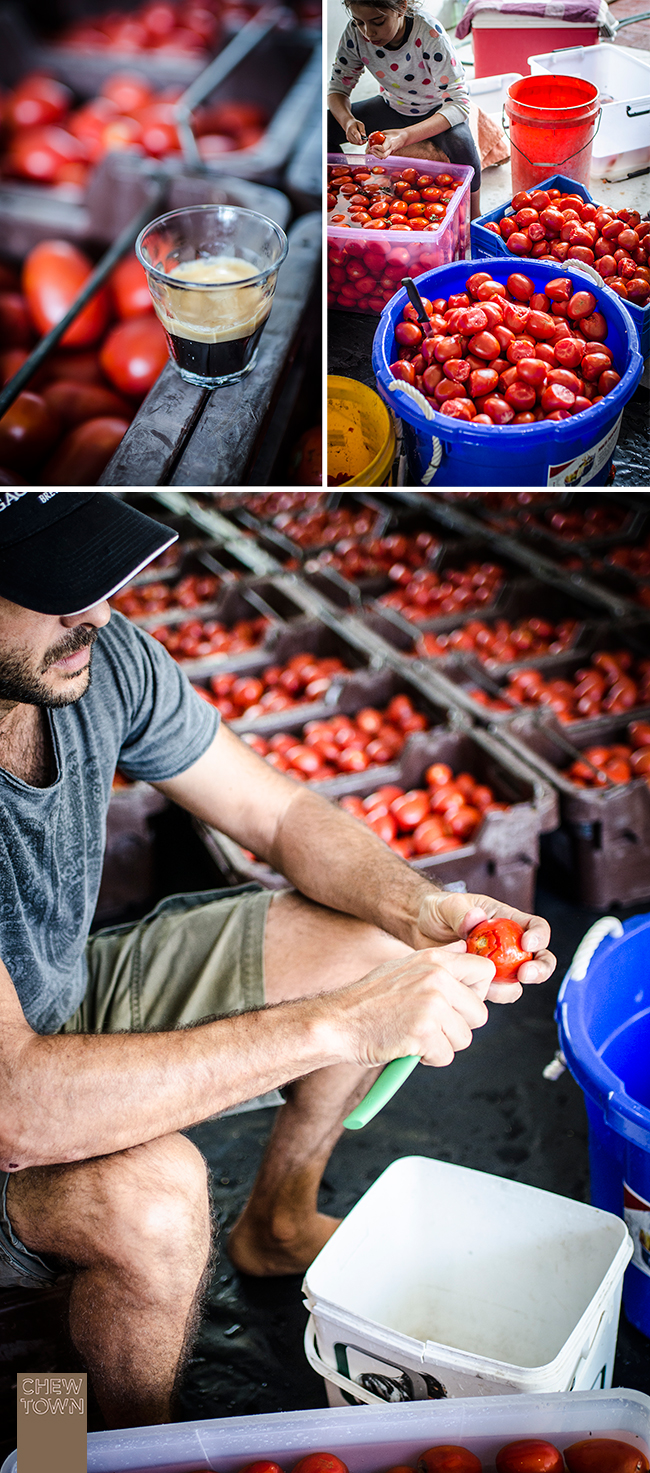
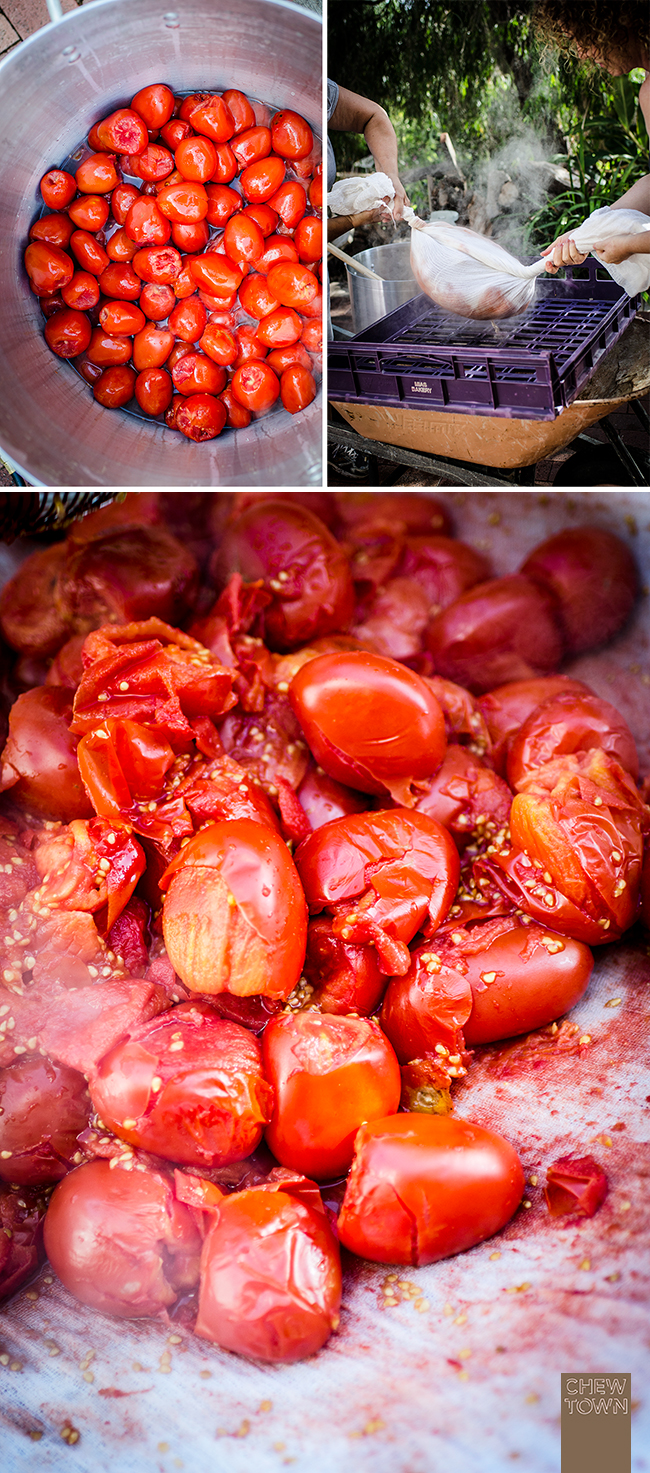

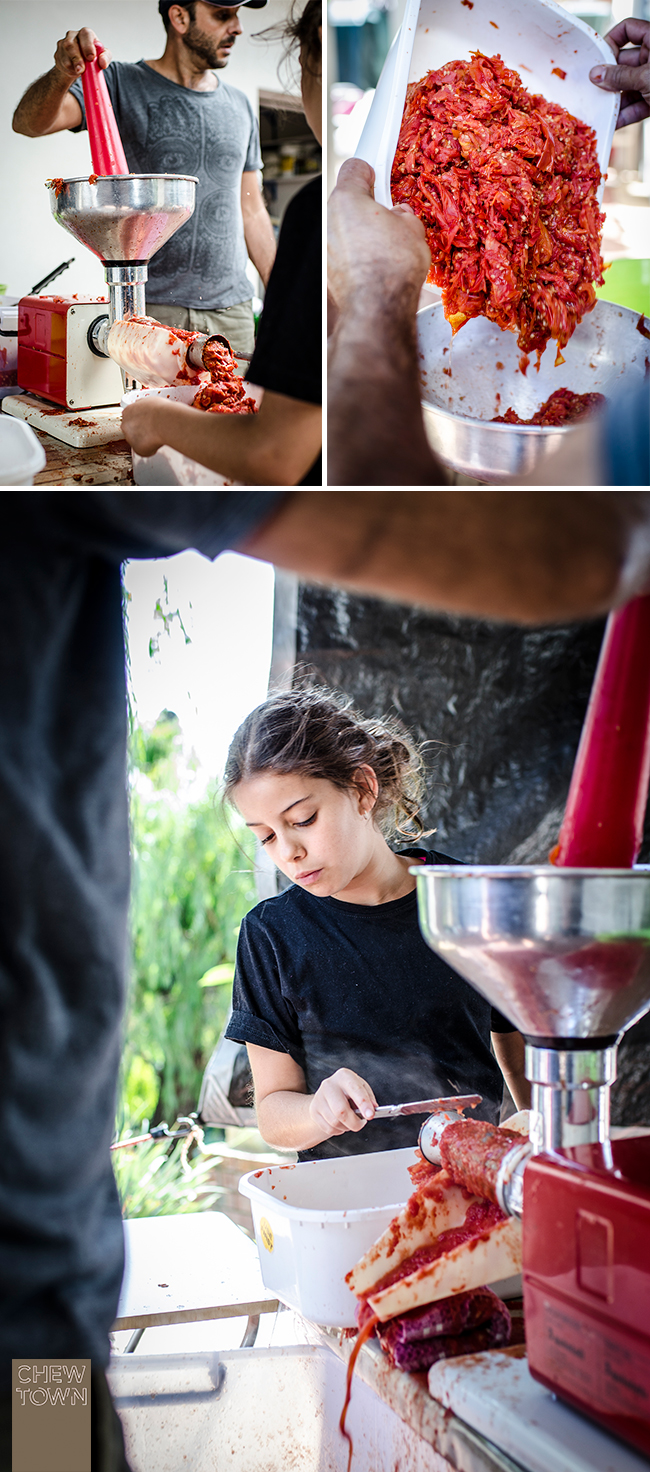
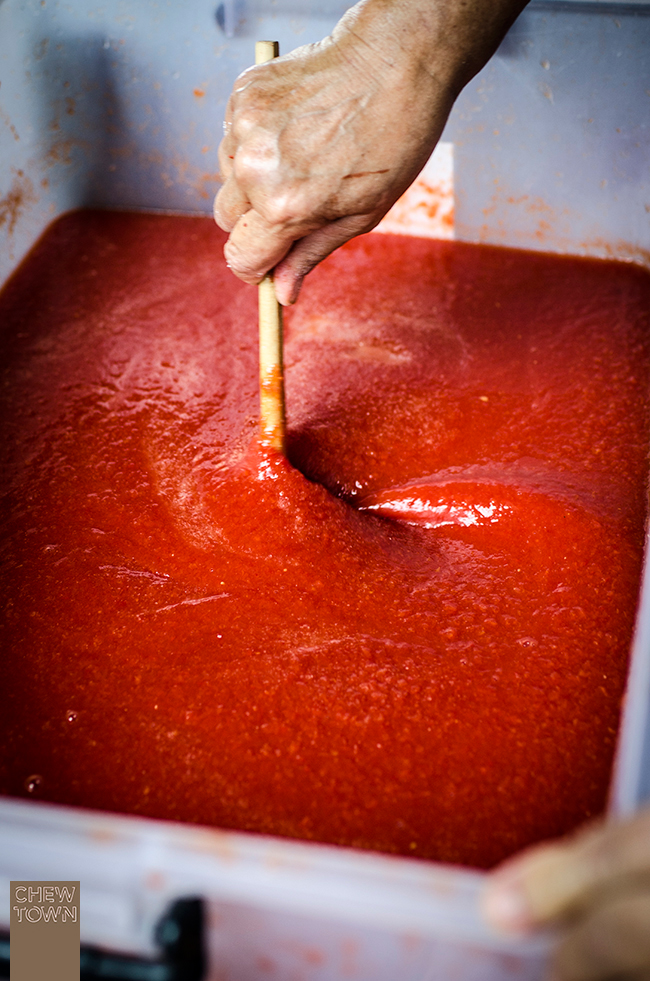
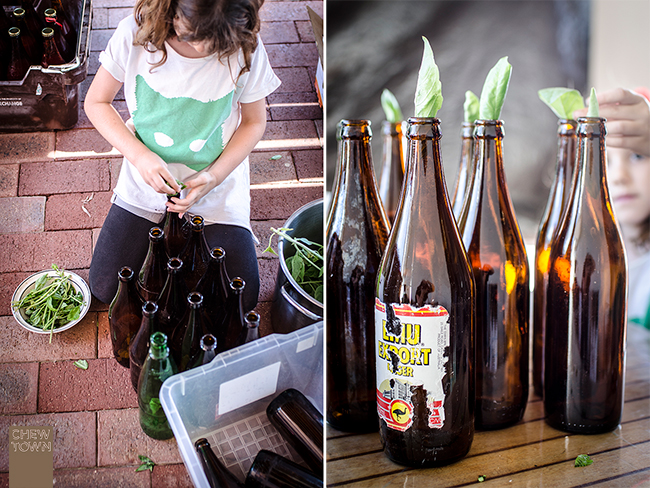
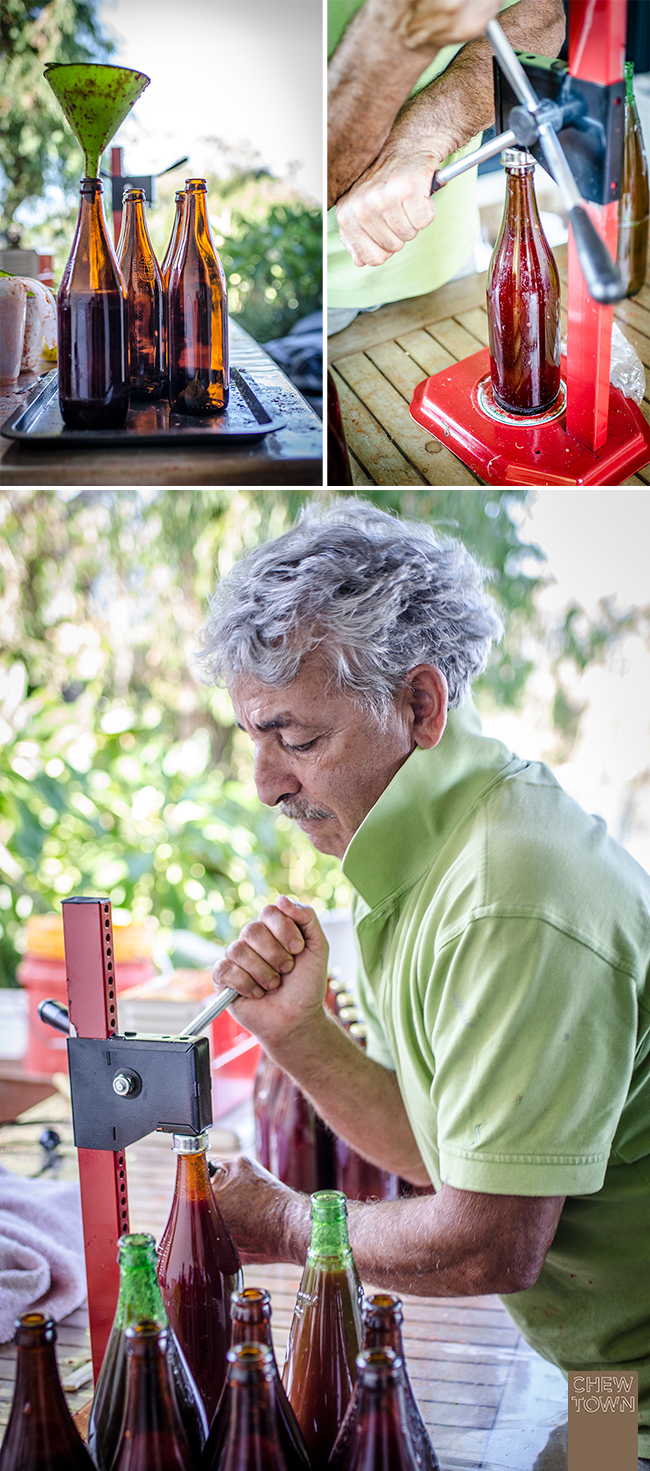
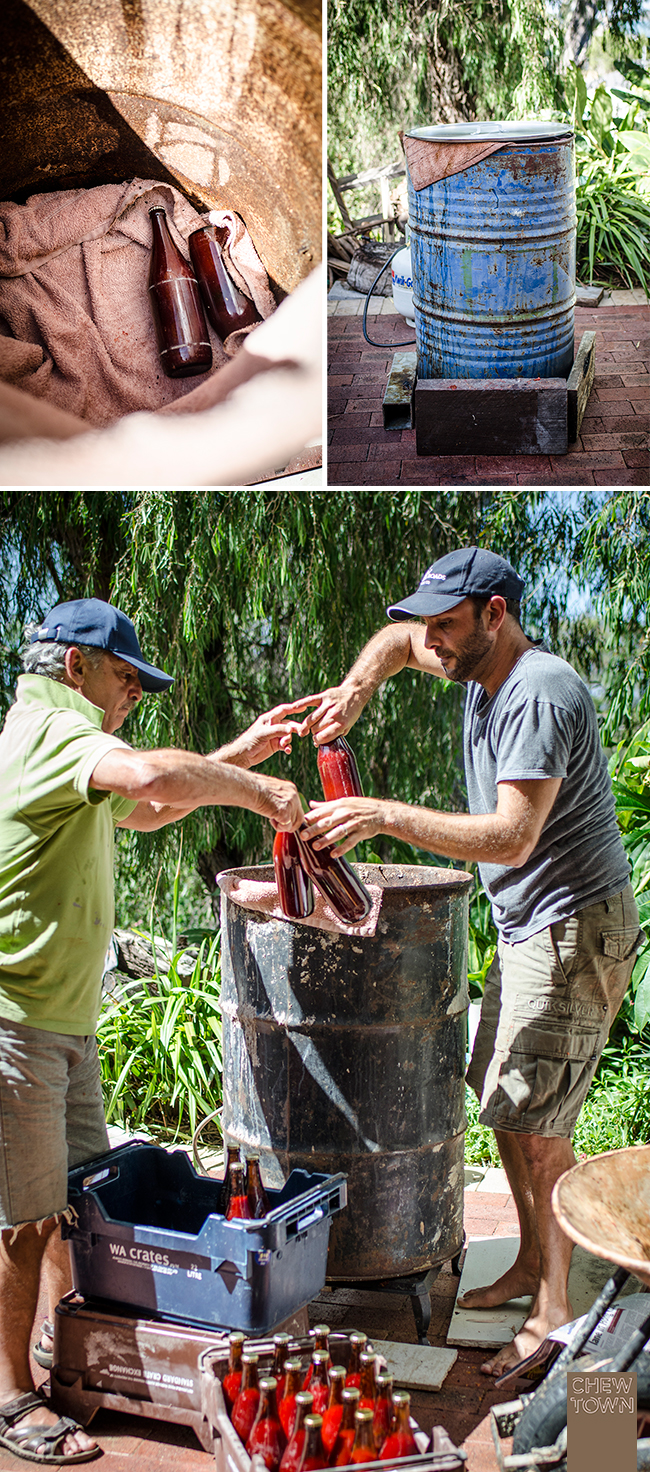


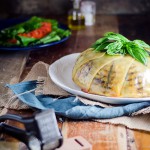
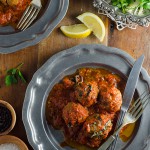
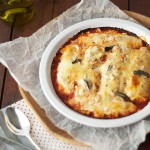
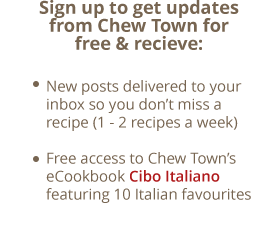

Amanda…you have outdone yourself! This is brilliant! What a sensational post and what a process! I’d be happy to volunteer if you do this next year! 😉
Recent Post: Fried Halloumi Cheese Burger
Thanks Peter! I’m writing you down on the volunteer list for next year x
I think I need to adopt your family or vice versa. I reckon I could core tomatoes enough to be useful, volunteer ?
What a fantastic post! Certainly brings back a lot of memories. We had planned to do a big ‘sauce day’ post but my Nonno is incredibly impatient and did it himself during the week. Once you’ve had the home-made stuff it’s hard to eat the sauce in jars, there’s really no going back.
Haha! Nonno’s are hard to get around. I hope he didn’t do it all by himself – its a lot of work.
Oh man…. You can not imagine how much I really want to experience Passata Day. I’ve been pestering the in-laws for it for some time now but will need to up the ante. It’s such a wonderful tradition. I had a chuckle at the job descriptions because I’ve been told of the job hierarchy ha!
Recent Post: Snickers bars (choc almond) for The Sweet Swap
Now that you have married into an Italian family, you HAVE to make them do it. The job descriptions are so full on and everyone takes their jobs so seriously!! So much fun.
wow. That’s a good looking post and so instructional and mm passata! dinner invite in the inbox please. 😉
Recent Post: Pu’er on Danks Waterloo
Haha! You only get a dinner invite if you come and make it with us. 😉
I have been waiting for this post to come up. Love the photos and I am so glad you shared this with us all. Your mum’s list had me in hysterics! I am so looking forward to passata day next year. Oh and that shot with the tomatoes and the espresso, how Italian of you LOL!
Recent Post: The 10 Dos & Don’ts for Taste of Sydney 2015
You are definitely in next year! The espresso was the only way to get started given it was a 6am start time!!
Hey Amanda… Great post!! I’m Italian (and much older than you!) and living in Canada. We have been doing this tomato “thing” for years and, last year, I decided it was time to blog about it. Every. Single. Step. It’s funny how you realize the amount of work it is after you document everything! When I was young, we thought it was a chore (and me and my sister secretly wanted to be “English” so we wouldn’t have to do this every year. But, as I got older (and ended up working in the food biz), I really appreciate Tomato Sauce Day and everything that comes with it…the time to talk to each other, a time to reminisce about fun times and a great day spent in the sunshine (hopefully) that always ends with a big pasta dinner and lots of homemade wine.
If you are at all curious, here is my post (http://www.justcrumbs.ca/2013/09/12/doin-tomatoes-part-two/)…let me know what you think!!
Hi Suzie, thanks for your note! It was wonderful to read your take on it all over on your blog. It really is about so much more than just the sauce. I definitely didn’t appreciate it when I was younger, and really wished I was doing something else but now I wouldn’t have it any other way!
It’s really interesting to read this Amanda. With no Italian background, a group of friends and I recently processed 320kg of tomatoes for sauce, however our method (taught to us by an Italian 🙂 ) is completely different. I find that every family has their own way of doing things but the end result is always the same. Glorious sauce.
Everyone definitely has a slightly different method, some boil theirs first and some don’t, some add just basil and some add parsley. The trick is to try something slightly different each year until you find the best method for you!
Wow Amanda, that was fantastic to read and see the amazing photos. I bet that passata is divine. Thanks for sharing.
Thanks Tony, it really is an extra special batch this year – tastes better than it has in a few years, but our theory is because the whole family was together again!
This is seriously epic!!! I can’t imagine the smell of the whole process would be amazing! Hopefully you will be promoted next year from the ranking of photographer to the duty of putting the basil in the bottles. LOL!
Recent Post: Expedia – Get your kicks on Route 66
Thanks Billy! There certainly was a distinct raw tomato smell that permeated the whole day – luckily we could still eat plenty of pasta at the end of it all! I think you’ll find I was also the understudy to the CEO and 2IC!!
And here we have it, the epic passata post. LOVE this, Amanda! Amazing post that drew me right in. Thanks for sharing!
Recent Post: Izba Russian Treats
YAY! Thanks for your gorgeous words lovely. x
What an absolutely gorgeous post Amanda! Loved this visual journey through an amazing family tradition. 364 bottles?? Woah!! How many did you bring down with you? We are attempting a mini Passata Day (for the first time!) this weekend with only about 15 kilos of tomatoes 🙂
Recent Post: Cook Republic Food Photography, Writing, Cooking And Styling Workshops For 2015
Thanks Sneh! It was definitely a lot of bottles. I currently have 24 bottles but every time someone comes to visit us we’ll get another 12 bottles. It’s a year long delivery process. You will have a BALL making sauce – I can’t wait to hear about your weekend sauce day!
Yes, it is an enormous process, but Amanda, we leave out all salt and basil, otherwise everything is exactly the same. It doesn’t go off, because although we made a few weeks ago, the last lot was made in 2010, and I’m still using. Also basil can be added as required, just in case it doesn’t suit a particular dish. Keep up the great work, and I hope you still doing some singing.
So lovely to hear form you Carmel! I hope all is well. Thanks for your lovely comment. x
What a beautiful and special family tradition. I imagine all those wonderful memories must come flooding back whenever you use the passata. Fantastic photos, Amanda.
Recent Post: Inspirational Interview – Fab 5 with Scoop Nutrition
They really do Tara, you definitely appreciate it more when you’ve had a hand in making it yourself.
Totally fascinating! When I grow up I want to be part of your family. 😉 Best post I’ve read in a long time — thanks.
Recent Post: Easy and Tasty Roast Cabbage
Thanks John. It’s never too late for us to adopt you! 😉
Great post Amanda, loved the photos they were all fantastic shots and I love how you had a photo of an espresso that’s the perfect start to such a big job! Bought back fond memories as a child in Melbourne doing it with my aunts and uncles, sadly not done anymore in our family, but I will definitely ask mum for a plate of pasta when I am in Perth soon. Grazie bella!
Hi Connie, thanks for your lovely words. Definitely couldn’t have done it without the espresso!
Great stuff. As a family member(I hope) I am there. My Italian should be O.K. by then.
xxxxxx
You are definitely in next year Elaine! Keep practicing your Italian!
This is something I’ve always wanted to do, especially after reading Looking for Alibrandi. lol I’ve always wanted an Italian family to adopt me for this. If you need any volunteers for next year, you have my number!
Recent Post: Burger Project, Sydney
Everyone who has read Looking for Alibrandi wants to go to a sauce day! 🙂 always makes me smile. We can definitely talk adoption my friend 😉
ive only seen such big scale in looking for allibrandi! this is amazing! I would love to take part next year!
It is definitely ‘large scale’. But it is always a lot of fun.
Awesome! You’ve shown us so many things in one post – how to operate a business, how to make passata, how to bond with the family, etc. Love it!!! Labour of love…
Julie & Alesah
Gourmet Getaways xx
Recent Post: Things To Do in Cebu
What a production, wow!
Such a fun post and a great way to get the family together, keeping traditions going and passing them down. Lucky you!
Fantastic photos, I bet it was difficult in choosing out of so many. The one with the little girl watching as the sauce passing through the mill is fantastic.
Recent Post: Pineapple Guajillo Chile Pulled Pork
Aunty Amanda, we had lots of fun making the passata that day, and we love our pasta especially the sauce!
What an epic post, I love it! Great story and really great storytelling in the photography.
Recent Post: Cinnamon Meatballs with Marinara Sauce
Hi Amanda, if I’m using a mouli, do I still add the skins back in and process 3 times? Is this like tomato paste or do you use it straight to make your sauce? My family has a ravioli making tradition but I’m growing tomatoes this year and if live to try this, on a smaller scale!
Hi Judy, if you are using a hand mouli, then I would put the skins through 2 times as it unlikely you’ll be strong enough to put them through the hand mouli 3 times. The skins are what make the passata. They also add all the flavour and thicken the passata otherwise it will be more like tomato juice if you just put the tomatoes through one time.
So many memories! Exactly how I remember it in my family! Thank you!!!
Hi Amanda
Wonderful post. I have a question.
Given that the flavour of the passata is in the skins, would it be terribly bad to simply blend the entire tomato mix up, skins, seeds, etc into one big pulp mass and cook that in a pot rather than boiling the passata in bottles? I’m just looking for a decent way to make it in small quantities at home. Would the skins affect storage capabilities?
Hi Neil, you can add the skins and seeds if you like, but the texture will be very different. While the flavour is in the skins, you are not actually eating any part of the skins in a normal passata. That is why it is sauce like. If you were to add the skins, every bite full would yield a large quantity of skins and most people don’t like the texture. Secondly, the boiling of the passata in the bottles, isn’t to cook the passata at all, it is to preserve it so that the passata keeps for over a year – much like the way jams and pickles are put in jars and boiled (you still have to cook the passata when you are going to use it). I do hope that helps! You can make a fresh tomato passata also, if you are just wanting to make it to use immediately. That has a different process but it very easy. I will aim to put together the recipe for that soon too so that you can read it.
“If you were to add the skins, every bite full would yield a large quantity of skins and most people don’t like the texture”
That’s not a problem when everything is blended. What you end up with is a smooth soup texture. I did this last week in fact. I simply filled a pot with tomatoes, added a tiny amount of oil and a few chopped cloves of garlic and put the whole thing on the hob and left until the tomatoes had all softened and collapsed. Then just poured the whole thing into an electric blender and whizzed to a pulp.
Whilst the result is a tasty sauce, the problem I found is that it is too thin, very much like a soup. It actually makes a nice gazpacho but what I want is a thickish passata. I guess I would have to boil the sauce for a while to reduce it to obtain the passata thickness.
I’m puzzled as to how your process produces a reasonably thick sauce as it’s just pure tomatoes blanched and put through a mill and you’ve removed the skins. I would have thought a sauce made from the whole tomato inc skins would be thicker than one without the skins but it clearly isn’t.
I can only assume therefore that the end consistency is to do with the type of tomatoes used? Or does your Mouli/Food mill remove liquid content ?
I’m glad to hear that you are happy with the version you have made. That’s great news. As we are making a traditional tomato passata and not a sauce, it needs to be cooked before it becomes a sauce.
Hi Amanda, great post and would love to give this a try. Just had a quick question- how do you actually sterilise the bottles before you put the passata in?
This year we made passata for the first time. We found a press, like is shown in your photos, in a little second hand store that is owned by an Italian gentleman. He told us this is what his family used for years to make passata ot tomato sauce. Great! The adventure has begun and must say the flavour is second to none. We did not discard the skins after they went through 3 times. I put them in the dehydrator and when dried resembles fish food! They were then put into a blender type machine – a Magic Bullet here – and made into a finer blend which I use in soups, stews etc. There is no looking back now! Thanks for your blog .. you did a great job!
I’m so delighted you had a go at making passata! How wonderful. Great idea with the skins – incredible that you managed to minimize waste! I’m definitely going to try that the next time we make it. Thanks so much for the comment!
thanks to urhard work u made mine very easy. i had allways made sauce with my family and we all had our jobs but sadly within a year i lost uncle and aunt and mum so i went without sauce till now i could not for the life of me remember how long uncle would boil the bottles for now i know and made sauce today for my first time by myself even grew my own Basil thanks for ue great site now my kids can help me next year Joanne Kearney
Hi Joanne, what a lovely message. I’m so delighted to hear that my post helped you with some missing memories! Its such a wonderful thing to make together as a family.
thanks to you Amanda and ur site i will tell my friends about it and thanks for a good site regards Joanne
Hello Amanda. I’ve been making my first batches of passata, and although my production wasn’t at the same scale of yours, I found your post really useful. Maybe I’ll scale up next year…… Thank you!
My brother in law is from Italy and when my sister married into the family, “doing the tomatoes” came with them. It went on for days in the back yard, over an open fire, with a hand cranked, not motorized press! They went into mason jars, were wrapped in newspaper (so they were “cushioned”) and placed in the water. Most of what you wrote was exactly the same for them. As a teenager, I enjoyed it! It was family time, and story time. 🙂
Eventually, the wives all rebelled and they chipped in and got the motorized press. And then they started to do them in their own homes, on the stove. And eventually, “doing the tomatoes” came to an end.
It’s been 30 or 40 years since I was that teen. Maybe I will try “doing the tomatoes” myself this year. Thanks for the memories!
I luv Italian passata! I buy it from my local but it always tastes a bit shite. Perhaps next year uncle Guido and I will make it from scratch. Fuggedaboudit!!
I really want to make a good batch of this passata at home but I’m unsure about the boiling/preserving part. You appear to use fairly normal looking bottles which you seal the lids on BEFORE they go into the large barrel for hetaing. I don’t understand how the bottles don’t explode under the heat and the presumably expanding steam that would be generated inside.
How do I replicate this at home on a stove or oven. Can you just put jars of passata in the oven with sealed lids? Should I use Mason/Kilner jars with those 2 part lids so that steam can escape?
Help please!
Hi Neil, the process of the final preserve is exactly like when you boil finished jams in their bottles in rolling water – you will not have that issue. The final boil is to preserve them by sealing the lid tight. I’ve found another post online using mason jars in a home kitchen if it is easier – http://www.foodnetwork.com/recipes/tomato-sauce-for-canning-recipe.html
What an awesome post! This surely is a delicious passata especially that it’s a family effort.
Hello, this is my family tomato sauce making step by step. So nice to see how you’ve documented it. Complimenti!
I can’t tell you how much I enjoyed your post about passata – I just returned from visiting my family, and we indulged in eating so much pasta made with last year’s passata – just delicious! Your pictures and text were a perfect description of a perfect day. Thank you so much – and your mom is delightful!
made 3 kilos last Sunday, with tomate rosa, from Loule market, Algarve……to die for!….used up in two days…..this Saturday will get 5 kilos, but may need a donkey to assist the transport plus all the veg and fruit….paradise…like your post!!!
sorry for the late reply to this Geoffrey, but was off getting married! So glad you made a batch… so funny that it only lasted 2 days – now you understand why we make 300 bottles that way we only ever have to do it once a year!!
This is so beautiful and just an amazing process-loved reading and seeing this post! Thank you!
Hi Amanda, we just held our Spring 2016 Passata Party with 20 family, friends and kids galore. It was our first and everyone is still raving. 60 bottles later we can not wait to the 2017 Spring event. Thanks for your post and happy to send you some pics if you wish. We are in Newcastle and started at 10am. Our wonderful neighbor made the espresso and everyone chipped in with trays, salads and I made the spit lamb and pasta to enjoy with the first batch. Many drinks, great music lots of laughs we wrapped up at 4pm. Thanks again.
Lovely post! I just want to point out that you should replace your aluminium pot with something else, eg stainless steel. Tomatoes are acidic and react with the aluminium, causing the aluminium to leach into your food. Aluminium is a heavy metal and is toxic to the human body, in simple terms it acts as a slow poison. Stay healthy!
Hi Amanda,my name is Allen,iam half Italian,this side of me had been crying to get out for years iam52 and only now just getting into my Italian roots(an sorry?) I have just read your blog on Passat,it sounds great,so today I am going to do your family’s recipe? many thanks for this blog,and I would love to come to Australia just for making Passat
Many thanks again
Allan
Hi Amanda
Thanks for your great article on homemade passata. Can you please tell me what size stock pot you used? Looking at getting the equipment together to try this summer.
Hi Amanda,
Thanks for posting this. We are starting our own passata tradition and no longer have a Nonna to guide us. Id like some advice please…we didn’t blanch the tomatoes and we didn’t add extra salt to the passata…upon preserving/boiling we have noticed a separation from the sauce solids and a liquid (clear and yellow) underneath. Is this still going to be ok to use over time? Do you think you could help us pinpoint where we may have come undone? Look forward to your reply. Thanks again for such amazing detail.
Hi Vicki, I’ve not heard of such a separation with a change in colour. The salt is added because it is what contributes to the preserving of the sauce after bottling so it might have something to do with that. My mother tells me that you don’t have to blanch the tomatoes but she does because she gets a greater yeild so it is probably not that.
You do often get a separation between the first pass of the tomatoes (which is very liquid) to the thicker second and third pass of the skins because their consistency is so different. But there isn’t usually a change of colour like you are experiencing. Is the yellowy liquid thick like oil? Or thin?
Hi Amanda,i recently went to Italy to visit my father and his wife…I brought back a hand machine for the sauce, My dads wife showed me how to do the whole thing (more a less the way you guys to it).The first batch was ok, but the batch I done a few months later is all waterery and like the previous person it separated(after boiling process), a good shake and it is all good..What I would like to know is why would it be very runny??,drained it properly as I did like the first batch.
Thanks Nick
ps love your pictures and story
Hi Nick, every batch you make will have a different consistency due to the tomatoes. Some years we have a slightly runnier passata and other years it will be very thick. Also, some batches are sweeter while others are more bitter. I would say that it has to be with the quality of the tomatoes each year. When we have a year of slightly watery passata, we just have to cook it a little longer when preparing it for sauce. Hope that helps!
YesterdayI followed your recipe using a mouli and only using 8 ks of tomatoes. I used vacola jars. When I got the jars out of the pot this morning the tomato pulp had risen to the top of the jar leave about 5 cm of clear watery liquid at the bottom of the jars. What to do? I am thinking to open the jars, strain the pulp from the liquid, reseal and boil. Would you agree? I loved your blog with all the beautiful photos. Such a wonderful day for your family.
Thanks for the recipe and the entertainment. I certainly don’t have the volume of tomatoes you do, but I have about 6kgs of tomatoes (picked from my garden) to process this weekend, so that’s a start. I’m going to do your thing of putting basil in the bottom of the bottle (ours are screw top preserving bottles), and because I don’t have a machine like that, I’m processing the whole tomato in a nutri-ninja (it will make it smooth enough to drink like tomato juice!).
Oh this is great! Something I really want to do with family and friends one day. I married into an Italian family who don’t do anything like this! Thankfully on a visit back to the village the neighbours taught me how to at least make polenta over the fire. I also have the family polenta pot.
I read your blog and noticed that you leave the drum to cool overnight. I can’t fit all 100ish of the bottles drum. I know you do 300+ so what’s your secret to boiling in batches and still being able to cool them correctly?
I thought I could boil them over 2 days but the passata become acidic from not boiling right away.
Help!
Wow this inspired me to try and I had a couple boxes of tomatoes so spent a few hours processing just one of the boxes! I didn’t have the correct equipment though, just a thermomix, so blended the blanched tomatoes and passed the mixture through a sieve. I fear I may have just thrown the tastiest part to the chooks as now that I have re-read the instructions it looks like the whole product is used???? Because my sauce was a bit too runny I am now reducing it on the stove.
I kind of accidentally found this post when reading another recipe and saw the word passata.
Having no idea what it was I googled it and chose your link to read about it.
Heaven. I have canned tomatoes for years, but this. This is epic. I love your writing and descriptions, they just draw you in. I wanted to sit right in the big middle of that organized tomato mess, roll up my sleeves and help. Wonderful! Thanks so much for this delightful piece of your life. ❤️
We used san marzano tomatoes with a machine called Fabio Leonardi, this removed all the skin and seed and was much easier than passing through the food mill. This is where we ordered this machine
http://www.consiglioskitchenware.com/electric-tomato-squeezers
I would highly recommend if you are making more than a few bushels
Hi Amanda, Fabulous post that explains, in easy to use steps, the joyful process that your family takes to make passata! It is so admirable to see and hear how passata becomes such an important ingredient in growing and strengthening the bonds of a family. Time, distance and estrangement can have a negative effect on families but yours is made more resilient and beautiful by those mysterious bonding forces of family made passata; the sauce that binds!
My wife and I of 40 years enjoyed your passata recipe and methodology immensely! It explained completely what passata is and what it’s intended for. Food preparation, for the days or seasons ahead, is c beautiful way to bring family together and find the love that we have for each other!
Did exact same thing in Sicily in tiny village in the hills where mum was born , great family event an end product was superb, Chicho an enzo our Inlaws were incredible an we salute them an extended family members? Our dear mum passed away but her recipe still survives today! I was 13 years old when we made passata, I’m 60 now and it’s fresh in memory as yesterday, what great fun to tell my grandkids, I still use same recipe today in England but trying to get nice fleshy plum tomatoes is hard work , keep it up??
awesome post! have started making my own passata (on a much smaller scale) in the confines of my shoe box apartment in singapore using a sous vide machine to sterilize and seal the bottles. sadly the quality (and price) of tomatoes here are ludicrous though 🙁
Hi What burn do you use for the drum to boil the water
Hi Amanda, thanks for this idea! Would be a big help in making a perfect passata for my pasta! By the way I would just like to clarify, what do we do with the tomato skin? Will it be thrown away or will it be mixed with the tomato juice in the later part? was confused for a bit. Thanks
Once you have passed the skins through the machine 3 times you do discard the skins.